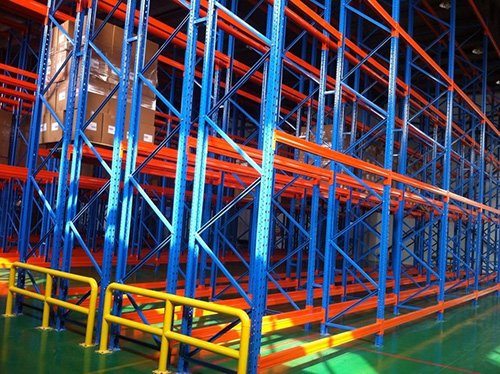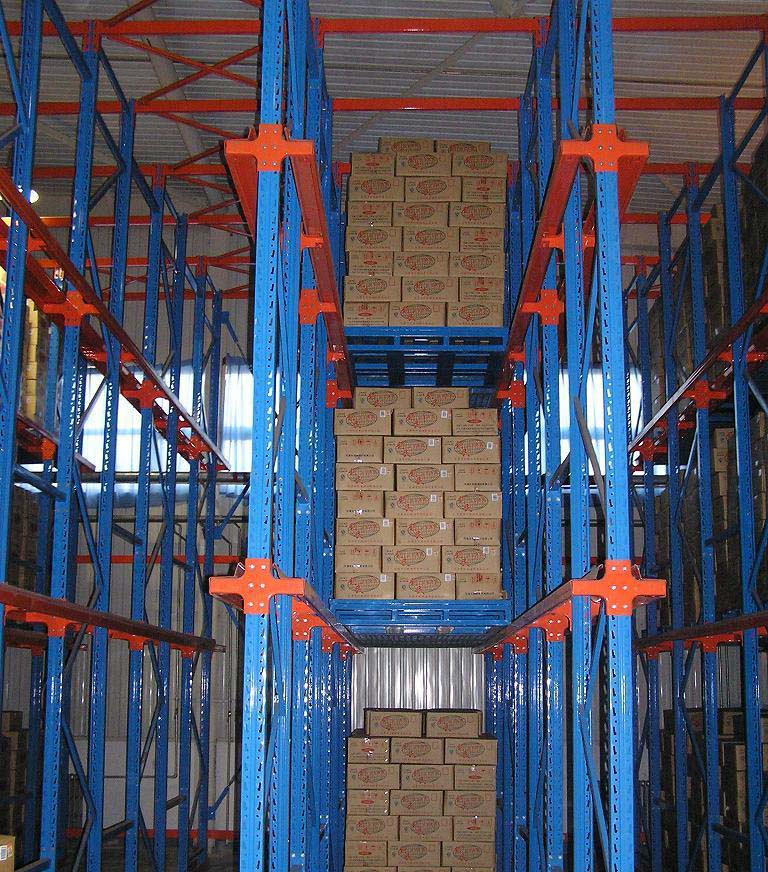The backbone of organized storage and efficient material handling across countless industries is the often understated yet utterly indispensable rack system. From sprawling warehouse distribution centers to compact retail stockrooms and specialized industrial settings, rack systems provide the structured framework that maximizes space utilization, enhances accessibility, improves inventory control, and bolsters overall operational safety. Understanding the nuances of different rack systems is crucial for businesses aiming to optimize their storage infrastructure. This comprehensive guide dives deep into five critical aspects of rack systems, empowering you to make informed decisions for your specific needs.

1. Defining the Rack System: Core Components and Functionality
At its most fundamental level, a rack system is a structural framework designed to store goods or materials in an organized, accessible, and space-efficient manner. It transforms vertical cube space, often underutilized, into valuable storage real estate. A typical rack system consists of several key components working in concert:
Uprights (Frames/Columns): The vertical members that form the primary support structure. These are usually steel beams with punched holes or slots at regular intervals for beam connection.
Beams (Load Beams): The horizontal members that connect to the uprights, creating the shelves or support levels upon which the load rests. They lock into the uprights using safety clips or bolts.
Beam Connectors: Hardware (like safety clips, bolts, or teardrop connectors) that securely fasten the beams to the uprights.
Braces (Horizontal & Diagonal): Cross-bracing components that connect upright frames, providing lateral stability and rigidity to the entire rack system, preventing sway and collapse.
Decking: Optional components placed on the beams to provide a solid surface for storing smaller items, boxes, or irregularly shaped goods. Common types include wire mesh decking, particle board, or steel sheets.
Row Spacers/Row Ties: Used in multi-row installations to connect adjacent rows of racking, enhancing overall stability.
The primary function of any rack system is to safely support the intended load while enabling efficient storage and retrieval, often facilitated by material handling equipment like forklifts or order pickers.
2. Exploring the Diverse Landscape: Major Types of Rack Systems
Not all storage challenges are the same, leading to the development of various rack system types, each engineered for specific applications, load characteristics, and operational workflows. Choosing the right type is paramount for efficiency and safety:
Selective Pallet Racking: The most common and versatile rack system. It offers direct access to every pallet location via aisles. Pallets are typically stored one deep on horizontal beams. This system provides excellent selectivity (100% accessibility) and is highly adaptable. Ideal for warehouses with a high SKU count requiring frequent access to all pallets.
Drive-In/Drive-Thru Racking: Designed for high-density storage of homogeneous products. Forklifts drive directly into the rack system lanes, storing pallets multiple deep on rails. Drive-In has an entrance at one end only (LIFO - Last-In, First-Out), while Drive-Thru has entrances at both ends (FIFO - First-In, First-Out). Maximizes cube utilization but reduces accessibility to individual pallets. Best suited for bulk storage of similar items with lower rotation rates.
Push Back Racking: A dynamic, high-density rack system operating on a LIFO basis. Pallets are stored on wheeled carts nested on inclined rails. When a new pallet is loaded, it pushes the pallet(s) behind it further down the lane. Retrieval is from the front – removing a pallet causes the next one to roll forward. Offers higher density than selective racking while providing better selectivity than drive-in systems. Good for medium turnover items with multiple SKUs per lane.
Pallet Flow Racking: A high-density, high-throughput rack system operating on a FIFO principle. Pallets are loaded onto an inclined track at the high end and flow by gravity on rollers or wheels to the pick face at the lower end. Ideal for perishable goods, high-volume items with consistent rotation, and cross-docking operations. Requires careful load and lane management.
Cantilever Racking: Specifically designed for long, bulky, or irregularly shaped items that cannot be palletized easily (e.g., lumber, pipes, furniture, carpets, sheet metal). Features vertical columns (uprights) with horizontal arms projecting outward. Loads are placed directly on the arms. Offers excellent accessibility from the sides. Commonly used in lumber yards, manufacturing plants, and warehouses storing oversized items.
Shelving Systems (Industrial/Heavy-Duty): While sometimes distinct from pallet racking, heavy-duty shelving is a vital rack system category. It features uprights, beams, and solid decking (wire, wood, steel) to store smaller items, cartons, bins, or lighter palletized loads. Ideal for parts storage, order picking operations, and retail backrooms. Includes variations like boltless shelving and mobile shelving.

3. The Engine of Efficiency: Rack Systems in Material Handling
A rack system is rarely an isolated entity; it's the critical infrastructure integrated with material handling equipment (MHE) to form a cohesive operational flow. The choice of rack system profoundly impacts MHE utilization and overall warehouse efficiency:
Forklift Integration: The type of rack system dictates the type of forklift required (e.g., narrow aisle forklifts for very narrow aisle racking, counterbalance for selective racking) and the necessary aisle widths. Wider aisles needed for selective pallet racking allow standard forklift maneuverability, while high-density systems like drive-in require specific forklift operation skills due to confined lanes.
Order Picking Optimization: Rack systems directly influence order picking efficiency. Selective racking allows easy access to individual SKUs. Systems like carton flow racks integrated within shelving or pallet racking enable high-speed, ergonomic picking of small parts (pick-to-light or put-to-light systems often integrate here).
Throughput and Flow: The rack system layout defines the flow of goods. FIFO systems like pallet flow ensure stock rotation, critical for perishables. The rack system's design impacts how quickly goods can be received, stored, picked, and shipped. Optimized layouts minimize travel time for MHE.
Space Utilization vs. Accessibility Trade-off: Material handling constantly balances the need for maximum storage density against the need for quick access. High-density rack systems (Drive-In, Push Back, Flow) maximize pallet positions per square foot but sacrifice some speed of access compared to selective racking. The optimal rack system finds the right balance for the specific product velocity.
Safety Interface: Properly designed and installed rack systems provide safe access points for MHE operators. Adequate clearances, clear signage, and protective elements like column guards and rack protectors are crucial to prevent collisions and damage to both the rack and MHE. The rack system must be rated to handle the impact forces from nearby MHE operations.
4. Ubiquitous Utility: Key Applications Across Industries
The versatility of rack systems ensures their presence is felt across a vast spectrum of sectors:
Warehousing & Distribution Centers: The heartland of rack systems. From massive regional DCs to smaller fulfillment centers, selective pallet racking is ubiquitous for storing palletized goods. Flow racks and shelving dominate pick modules for e-commerce order fulfillment. High-density systems manage bulk storage. The rack system is the literal framework of modern logistics.
Manufacturing: Within plants, rack systems store raw materials, work-in-progress (WIP), and finished goods. Cantilever racks hold long raw materials. Shelving systems organize parts near assembly lines. Push back or drive-in systems might store large volumes of components feeding production. The rack system ensures materials are available when needed on the shop floor.
Retail: Beyond the sales floor, retail backrooms rely heavily on industrial shelving systems to store overstock, seasonal items, and promotional goods. Some larger retailers use pallet racking in their distribution centers feeding stores. An efficient backroom rack system is vital for store replenishment speed.
Cold Storage: Specialized rack systems are essential for freezer and cooler warehouses. These systems often use specific coatings to resist corrosion from condensation and harsh environments. Pallet flow racking is popular for FIFO rotation of perishable goods. Structural integrity at low temperatures is paramount for cold storage racking.
Automotive: Dealerships and parts distributors use shelving and cantilever racking extensively. Manufacturing plants store tires, components, and sub-assemblies on various rack systems. Specialized racks might hold body panels or engines.
Aerospace: Storage of long, expensive, and often delicate components like wings, fuselage sections, and tubing makes cantilever racking a critical rack system in this industry. Precision and safety are non-negotiable.
Archiving & Records Management: High-density mobile shelving systems maximize floor space in document storage facilities and archives, providing secure and organized storage for boxes and files.
5. Making the Right Choice: Critical Factors in Rack System Selection
Selecting the optimal rack system is a complex decision with significant long-term implications for safety, efficiency, and cost. Key factors demand careful consideration:
Load Characteristics: This is paramount. What are you storing? (Pallets, cartons, long items, drums?) What are the unit dimensions (length, width, height)? What is the weight per pallet location? This determines the required beam and upright capacity of the rack system.
Inventory Profile & Turnover: How many different SKUs do you have? What is the velocity of each SKU (fast, medium, slow movers)? High-turnover SKUs benefit from easily accessible locations (e.g., selective racking near aisles, flow racks). Slow movers can go into higher-density storage. The rack system must support your picking and putaway strategy.
Available Space & Building Constraints: What are the dimensions of your warehouse (length, width, clear height)? Are there obstructions like columns, doors, or sprinkler heads? Floor load capacity? These physical constraints directly dictate the feasible rack system height, layout (aisle widths, row lengths), and type. Maximizing clear height utilization is often a major goal.
Material Handling Equipment (MHE): What equipment will be used (forklift type, reach height, turning radius)? The rack system and MHE must be perfectly matched. Narrow aisle racking requires VNA (Very Narrow Aisle) trucks. Standard selective racking works with counterbalance or reach trucks. Ensure aisles are wide enough for safe operation.
Accessibility Requirements: How quickly do you need to access specific items? Does your operation require 100% selectivity (every pallet directly accessible), or can you accept LIFO/FIFO constraints for higher density? The balance between density and accessibility defines the rack system type.
Budget & Total Cost of Ownership (TCO): Consider not just the upfront purchase and installation cost of the rack system, but also long-term costs: potential maintenance, flexibility for reconfiguration, durability, safety features, and the operational efficiencies (or inefficiencies) it enables. A cheaper, lower-capacity system might be a false economy.
Safety & Compliance: The rack system must comply with relevant local and international standards (e.g., OSHA guidelines in the US, SEMA codes in the UK, FEM standards in Europe, AS4084 in Australia). Consider seismic requirements if applicable. Factor in the cost of necessary safety accessories (guards, netting, signage).
Future Growth & Flexibility: Can the rack system be easily reconfigured, expanded, or relocated as your business needs change? Selective racking offers high flexibility. Some high-density systems are less adaptable. Choose a system that can scale with you.
A well-chosen and properly implemented rack system is far more than just metal in a warehouse; it is a strategic asset that drives operational excellence. By understanding the fundamental components, the diverse types available, the critical integration with material handling, the vast range of applications, and the meticulous factors involved in selection, businesses can make informed investments that maximize their storage potential, enhance workflow efficiency, improve inventory accuracy, ensure worker safety, and ultimately contribute significantly to the bottom line. Whether you're designing a new facility or optimizing an existing one, prioritizing the right rack system lays the essential foundation for a streamlined, productive, and scalable operation. The rack system truly is the unsung hero of the modern supply chain.







